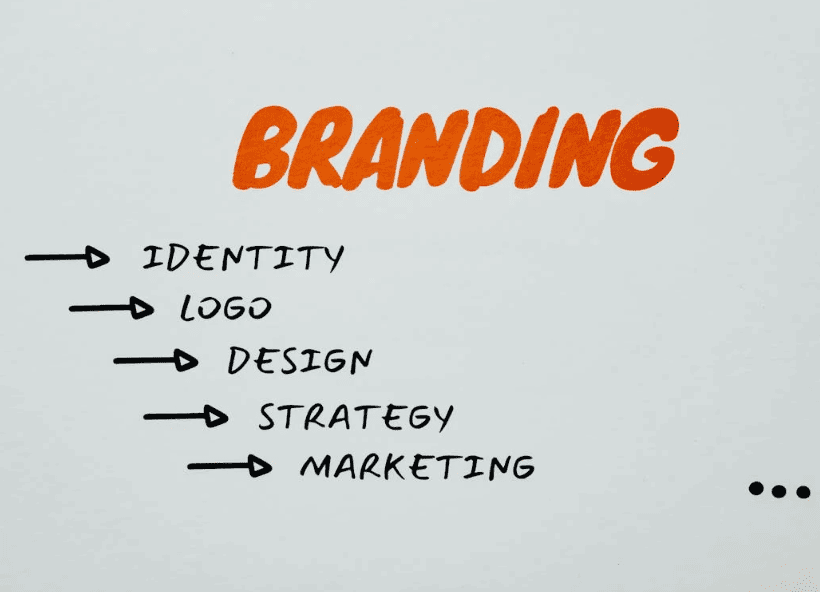Are you finding it hard to convert audiences with engaging copy? Then you need to implement the best copywriting tips in the article to get ahead of the competition. These are the basics that most copywriters use to great effect.
We’ll also share the benefits of using copywriting to create successful content. You’ll see that hard work can pay off in a variety of ways. Our post includes a few examples of copywriting, too, so you can see how it looks in practice.
Keep reading to learn more about the best tips to write copy that will help you craft winning content.
Aug 14, 2024 • 13 min read
What Is Copywriting?
Copywriting is the art and science of writing persuasive content aimed at promoting a product, service, or brand. It involves crafting clear and compelling messages that resonate with a target audience. The idea is to drive your readers to take a specific action. This might be to make a purchase, sign up for a newsletter, or click a link.
Effective copywriting combines creativity with strategic thinking and utilizes techniques from psychology and marketing to influence consumer behavior. It can take a long time to master the art of copywriting since it’s a skill that you hone with practice and time.
Key elements of copywriting include understanding the audience, identifying their needs and pain points, and presenting solutions that align with those needs. This typically varies significantly for each niche, but there are common overlapping strategies that we’ll share in this article.
Copywriters often work across various mediums, which include websites, advertisements, social media, email campaigns, and more. It’s important to adapt your copywriting skills for each platform to get the best results.
Advantages of Good Copywriting
Are you not sure why it’s worth taking the time to perfect your copywriting skills? In this section, we’ll reveal the top reasons why you should work hard to improve the quality of your copywriting. Also, you can justify the investment of hiring a copywriter for different purposes to improve the writing flow.
Here are the top benefits of great copywriting:
- Increased conversions: Good copywriting significantly boosts conversion rates by effectively persuading potential customers to take action. It works by effectively highlighting pain points and benefits. Also, a well-crafted copy guides readers through the buying process. This ensures they don’t get confused or frustrated along the way and leave.
- Enhanced brand image: Effective copywriting strengthens brand identity and perception by communicating a consistent tone and message. Overall, a strong brand voice helps differentiate a business from competitors, fosters trust, and establishes an emotional connection with the audience.
- Improved SEO performance: Good copywriting incorporates relevant keywords and enhances a website’s search engine optimization (SEO). Therefore, by creating high-quality and informative content, businesses can improve their search rankings. This will attract more organic traffic and increase visibility. This not only leads to more website visits but also establishes authority in the industry to drive further engagement.
- Effective communication: Clear and persuasive copywriting ensures that you communicate key messages to the target audience. Hence, by distilling complex ideas into easily digestible content, businesses can engage diverse audiences and promote a deeper understanding of their products.
- Increased engagement: Good copywriting captivates readers and encourages interaction, which might be through social media shares, comments, or feedback. Additionally, engaging content draws in the audience and prompts them to connect with the brand on a deeper level. This interaction not only boosts brand visibility but also creates a community around the product.
Top 10 Best Copywriting Tips
Now that we know what is copywriting and its advantages, let’s turn our attention to the good copywriting tips that will tilt the odds of success in your favor. Most copywriters use these tips to ensure they have the desired effect on the target audience. These persuasive copywriting tips can help your work stand out.
1. Understand Your Target Audience
Understanding your target audience is just the tip of the iceberg when it comes to effective copywriting. Neglecting to do this is a common writing mistake. Therefore, conduct thorough research to identify their demographics, interests, pain points, and preferences. You’ll also need to create buyer personas to visualize your ideal customers
Make sure to tailor your copy to address their specific needs and desires, which will create a deeper connection and resonate with them. Overall, the more you understand your audience, the more persuasive your copy will be, and ultimately lead to higher engagement and conversion rates.
Finally, always remember to keep up with trends and customer preferences. This ensures you’re always delivering great copywriting in your content.
2. Focus on the Benefits and Not the Features
When writing copy, it’s crucial to highlight the benefits of your product or service rather than just listing its features. Customers want to know how your offering will improve their lives or solve their problems.
Therefore, transform features into compelling benefits by answering the question, “What’s in it for me?” Also, use emotional triggers to connect with readers by showcasing how your product can enhance their experiences, save time, or reduce stress.
3. Use Strong Headlines
Your headline is the first impression readers have of your copy, which makes it vital for grabbing attention. Generally, a strong headline should be clear, concise, and compelling to encourage the audience to read further.
Additionally, incorporate power words, numbers, or questions to evoke curiosity or urgency. You’ll need to test different headlines to determine which resonates best with your audience. Don’t be afraid to be bold.
Remember that a great headline can significantly impact your content’s effectiveness. It also sets the tone for the rest of your message and influences whether readers will engage with your material.
4. Create a Clear Call to Action (CTA)
The majority of copywriting needs to incorporate some form of CTA to ensure users take the intended action. This might be to buy a product, sign up for a newsletter, or use a free trial. Here are a few ideas to consider when optimizing your CTA’s:
- Be clear and specific: A strong CTA should clearly convey what action you want the reader to take. Therefore, use precise, persuasive language that leaves no room for confusion. Instead of saying “Click here,” you can use a CTA like “Download our free eBook now.” Specificity helps guide the user and makes it easier for them to understand the next steps.
- Create a sense of urgency: Incorporate time-sensitive language to encourage immediate action. Hence, phrases for an ad copy like “Limited time offer” or “Join today and save!” create a feeling of urgency that can motivate readers to act quickly. This approach taps into the fear of missing out (FOMO), which can significantly increase conversion rates when applied effectively.
- Use action-orientated language: Strong action verbs are essential for compelling CTAs. Therefore, instead of passive phrases, use words like “Discover,” “Join,” or “Get started” to inspire action. Action-oriented language not only energizes the reader but also helps create a mental image of the benefits they’ll gain. The end result is making the CTA more persuasive and appealing.
- Make it visually stand out: Great copywriters design the CTA to grab attention. To achieve this, use contrasting colors, bold fonts, or buttons that are easy to see. Furthermore, visual appeal can significantly impact engagement by drawing the reader’s eye toward the desired action. Generally, a well-designed CTA not only looks inviting but also encourages users to interact.
- Test and optimize: Regularly A/B test different versions of your CTAs to determine which ones perform best. Consider experimenting with wording, design, and placement. Also, analyze data from these tests to provide valuable insights into what resonates with your audience. This enables you to optimize your CTAs for maximum effectiveness and improved conversion rates over time.
5. Edit Ruthlessly
Editing is a crucial step in the copywriting process that can significantly enhance the effectiveness of your message. Also, after drafting your copy, take a break before revisiting it with fresh eyes. Look for unnecessary words, jargon, or redundancies that can dilute your message.
Make sure to aim for clarity and conciseness to ensure every word serves a purpose. Also, check for grammatical errors and typos, since they can undermine your credibility. You can also use third-party tools to find the right words to grab the reader’s attention.
6. Tell a Story
Another copywriting tip from us is to use storytelling. This is a powerful tool in copywriting that captures attention and fosters emotional connections. Therefore, by weaving narratives around your product or service, you can illustrate its impact in real-life scenarios. You can even use storytelling in your social media posts.
To create a compelling copy use relatable characters, conflicts, and resolutions to engage your audience. Furthermore, stories help convey complex ideas simply and effectively, which allows readers to envision themselves benefiting from your offering.
Furthermore, incorporating anecdotes or testimonials can further enhance the authenticity of your narrative. Remember that a well-told story can not only entertain but also persuade, which leads to increased engagement and conversions.
It’s possible to use AI tools to help craft a story with your copywriting. However, you’ll need to know the best practices to make the AI sound more human.
That’s where a solid AI story writer can really help. Instead of giving you robotic-sounding paragraphs, the best tools are trained to build stories with emotion, clarity, and structure, so your message actually connects with people. It’s like having a creative co-pilot that gets the job done faster without losing your unique voice.
7. Use Simple Language
Clear and straightforward language is key to effective copywriting. Therefore, avoid jargon, complex terms, or technical language that may confuse or alienate your audience. Instead, opt for simple words and short sentences to convey your message directly.
Write as if you’re having a conversation with your reader to make your copy more relatable and accessible. Furthermore, this approach not only enhances understanding but also builds trust and credibility with your audience.
Remember, the goal is to communicate your message effectively, so prioritize clarity over sophistication to ensure your readers easily grasp the value of your offering.
8. Incorporate Social Proof
Testimonials, reviews, and case studies play a crucial role in building trust and credibility for your brand. Hence, by showcasing positive experiences from satisfied customers, you provide potential buyers with reassurance that they are making the right choice.
Therefore, highlight user-generated content, expert endorsements, or statistics that demonstrate your product’s effectiveness. Also, incorporating social proof into your copy can help alleviate doubts, reduce perceived risk, and encourage readers to take action. Ultimately, leveraging social proof increases conversions by validating the value of your offerings.
9. Use Active Voice
Active voice makes your writing more dynamic and engaging. Also, it emphasizes the subject of the sentence to create a direct connection between the reader and the action. For example, instead of saying “The report was written by our team,” (passive voice) use “Our team wrote the report.” This shift not only makes the writing clearer but also fosters a sense of urgency and immediacy.
Furthermore, active voice often conveys confidence and decisiveness. Strive to use active voice throughout your copy to enhance clarity and keep your audience’s attention focused on your message.
When using AI tools to help with copywriting, make sure that you use writing prompts that instruct the use of active voice.
10. Leverage Visuals
Incorporating visuals into your copy can enhance engagement and comprehension. Images, infographics, and videos help break up text, which makes it more visually appealing and easier to digest.
Furthermore, visuals can also reinforce your message, and that makes complex information more accessible. For instance, a compelling infographic can succinctly present statistics or benefits, while images can evoke emotions and set the tone.
Finally, ensure that your visuals are relevant and high-quality, as they should complement your written content rather than distract from it. Combining strong visuals with persuasive copy enhances the overall impact and effectiveness of your message.
Examples Of Good Copy
Now let’s look at some of the top examples of good copy from different brands. These are industry-leading examples that you may have come across before. You can use the examples of good copy in this section to beat competitors in your niche.
1. BuzzFeed
Copy: “17 Life Hacks You Didn’t Know You Needed.”
BuzzFeed excels at crafting attention-grabbing headlines that pique curiosity and invite readers to engage. For example, this headline promises useful information and encourages readers to click through to discover practical tips, which makes it highly effective in driving traffic and engagement.
2. Basecamp
Copy: “Know what’s important. Do what’s important.”
Basecamp uses simple yet powerful language to convey its core philosophy. This copy succinctly communicates the brand’s focus on productivity and prioritization. It caters to professionals seeking to streamline their workflow. Furthermore, the directness encourages potential customers to consider how Basecamp can improve their productivity.
3. Mailchimp
Website copy: “Send better emails. Sell more stuff.”
Mailchimp’s straightforward and clear messaging directly addresses its target audience of small businesses and marketers. The copy effectively highlights the benefits of using the platform, which makes it clear how Mailchimp can help improve email marketing efforts and drive sales.
4. Everlane
Copy: “The Perfect White T-Shirt: Ethically Made. Responsibly Priced.”
Everlane effectively combines clarity and transparency in its product descriptions. This copy not only describes the product but also emphasizes the brand’s commitment to ethical fashion and fair pricing. Furthermore, it appeals to conscious consumers looking for quality and sustainability in their purchases.
5. Old Spice
Copy: “The Man Your Man Could Smell Like.”
This humorous and memorable tagline captures attention while appealing to both men and women. The clever copy plays on the idea of aspirational masculinity to make it entertaining and shareable. The campaign’s tone and humor effectively resonate with the target audience and increase brand recognition.

Use Smodin AI To Create Winning Copywriting Content
All the writing rules in this article will help you get ahead of the competition and draw in audiences. The strategies we offer you set the framework to find the right words to craft copy that will yield better results and drive sales.
However, learning how to incorporate our writing tips may take time and plenty of practice. To help you along the way, consider using the free Smodin AI Writer. It’s an AI-based tool that can craft highly effective copy for any scenario. If you want to start writing with your readers in mind, drive engagement to your copy, and entice them to take action, try copywriting with Smodin AI today!
FAQs
How can I make my copy more persuasive?
To make your copy more persuasive, focus on highlighting the benefits of your product or service rather than just listing its features. Also, use emotional language that connects with your audience’s feelings and needs, and incorporate social proof. This might be testimonials and case studies to build trust.
Additionally, include a clear call to action that prompts readers to take the desired action. Therefore, by combining these elements, you create a compelling narrative that motivates your audience to engage with your offering.
What role does a headline play in copywriting?
A headline plays a crucial role in copywriting as it is often the first thing readers see. A compelling headline captures attention and encourages readers to engage with the content. It should be clear, concise, intriguing, and convey the main message of the copy.
Furthermore, effective headlines often incorporate power words, numbers, or questions to pique curiosity. Furthermore, a strong headline can significantly impact click-through rates and overall engagement.
How do I create an emotional connection with my audience?
To create an emotional connection with your audience, focus on understanding their desires, struggles, and motivations. Additionally, use storytelling techniques that evoke feelings by illustrating how your product or service can address their pain points or enhance their lives.
Don’t forget to incorporate relatable language and examples that resonate with their experiences. Additionally, you can appeal to universal emotions, such as happiness, nostalgia, or security to forge a deeper connection. Generally, tapping into these emotions creates a sense of trust and loyalty toward your brand.
What are some common copywriting mistakes to avoid?
Common copywriting mistakes include using jargon or overly complex language that can confuse readers, neglecting to highlight benefits, and failing to include a clear call to action. Additionally, avoid writing long-winded sentences and large blocks of text. This can overwhelm audiences whether you’re writing a blog post or sales copy.
Additionally, not proofreading your copy for grammatical errors and typos can undermine your credibility. Finally, ignoring your audience’s needs or preferences can lead to a disconnect, so always tailor your message to resonate with them effectively.
What should I do if I’m struggling with writer’s block?
If you’re struggling with writer’s block, try taking a break to clear your mind and gain perspective. Furthermore, engage in a different activity that inspires creativity, such as reading, going for a walk, or brainstorming ideas.
You can also use AI tools that offer ideas for content that will inspire you to create your own copy.








 AI
Plagiarism Checker
AI
Plagiarism Checker
 AI
Content Detection Remover
AI
Content Detection Remover
